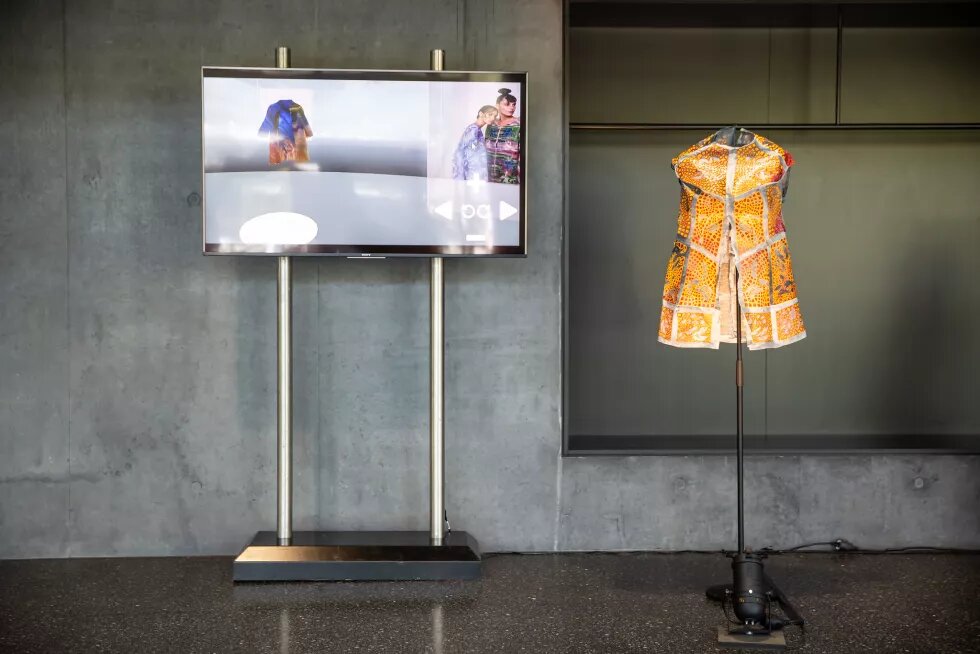Fast Fashion and the current hyper-consumption of clothing has a huge impact on the environment and is unsustainable. Globally, an estimated 92 million tones of textile waste is accumulated each year, the equivalent to a garbage truck full of clothes ending up on landfill sites every second. Currently, only about 10% of the material used for clothing ends up being recycled. Could clothing recycling help to reduce the toll our fashion addiction has on the environment?

Introduction
Fast Fashion and the current hyper-consumption of clothing is unsustainable, which has a huge impact on the environment. Globally an estimated 92 million tones of textile waste is accumulated each year, the equivalent of a rubbish truck full of clothing constantly ending up in landfill sites. Could clothing recycling help to reduce the toll our fashion addiction has on the environment? Currently, only about 10% of the material used for clothing ends up being recycled. The problem mainly comes down to what our clothes are made of. The fabrics used to manufacture our clothes are a complex combination of fibers, fixtures, and accessories. They are made from blends of natural yarns, man-made fibers, plastics and metals. For example, a typical T-shirt contains a blend of cotton, elastane, and many other components (such as labels and sewing threads). Sewing threads are usually made from a different material, such as polyester. This process makes recycling clothing very difficult. While fiber recycling exists, it is only used on a small scale due to its high costs. Currently, material recovery comes from downcycling; where discarded clothing is used to produce other composite fibers such as thermal insulation or carpets for use in the building industry.
Looking Into the Future of Clothing Recycling
To make our clothing sustainable, more fundamental changes of the way we design fashion need to be made. Fabrics, fibers, and garments will need to be designed in ways that make clothing easier to recover and recycle. “Design for Disassembly” is a concept which builds on the idea that products are designed intentionally for material recovery, value retention, and meaningful next use. Such an approach to clothing design places responsibility on fashion brands and designers to design products with re-usability in mind. Use of mono materials, minimising hardware, and use of safe dyes is some of the considerations for product design with recyclability in mind. Since 80% of the impact of a garment is decided at the designing stage, it is important that brands and designers start designing for the future of clothing re-use. In a bid to curb plastic waste and leverage recycling opportunities, brands and retailers are incorporating collections made from recycled fibers, often utilising PET bottles from the oceans. However, collections made from recycled materials remain a small percentage of the overall brand offering, which raises concern about efforts being driven by climate emergencies rather than ‘greenwashing’.
Clothing Recycling and Other Ways of Clothing Disposal
Brands encourage consumers to participate in clothing recycling projects through ‘Take Back Programs’ where clothing donations are rewarded with vouchers to be spent in stores. Such practices are questionable as they encourage further consumption and self-indulgence. In practice and in theory, there is little consensus around clothing recycling. In many cases, ‘recycling’ is a way of disposal; dropping off unwanted clothes to local textile recycling bins or donating them to charities. However, most of the clothes that are manufactured today are not made to be easily recycled, recycling projects provide little transparency about where exactly donations go. For years, our disposable approach to fashion was ‘exported’ to developing nations, with millions of trash garments being delivered to be re-sold and given a second life overseas. Unfortunately, most pieces of clothing are not of good quality and are of extremely small quantities, unworthy of being shipped. Many countries are reducing the amount of clothing that they are importing and some countries plan to stop importing clothes entirely as they want to support their own textile manufacturing industries. Consumers may find it useful to think of clothing recycling as a way of extending the life of garments if the condition is seen to be reusable. Gifting (giving clothing away to family/friends), clothes swapping, re-selling, or donating clothing to a responsible source are all great ways to extend product-life before it is to be recycled or down-cycled. These are also ways in which consumers can be proactive in their consumption patterns and be a part of the circular fashion industry, by keeping garments in an ongoing cycle of reuse for as long as possible. For the system to work, we need a better consumer understanding around the post-disposal phase of clothing. Technology may enable better clothing recycling in the future, but the responsibility lies with brands, designers, and consumer alike to facilitate a real transition towards a recyclable fashion industry.
The opinions expressed in this text are solely that of the author/s and do not necessarily reflect the views of the Heinrich Böll Stiftung Tel Aviv and/or its partners.


